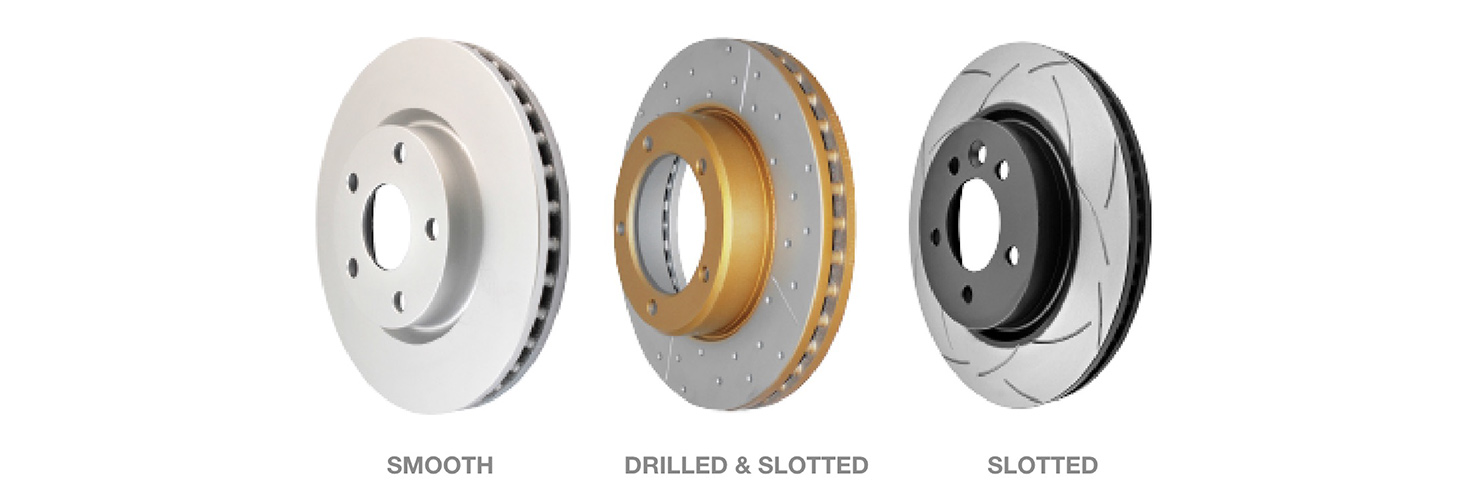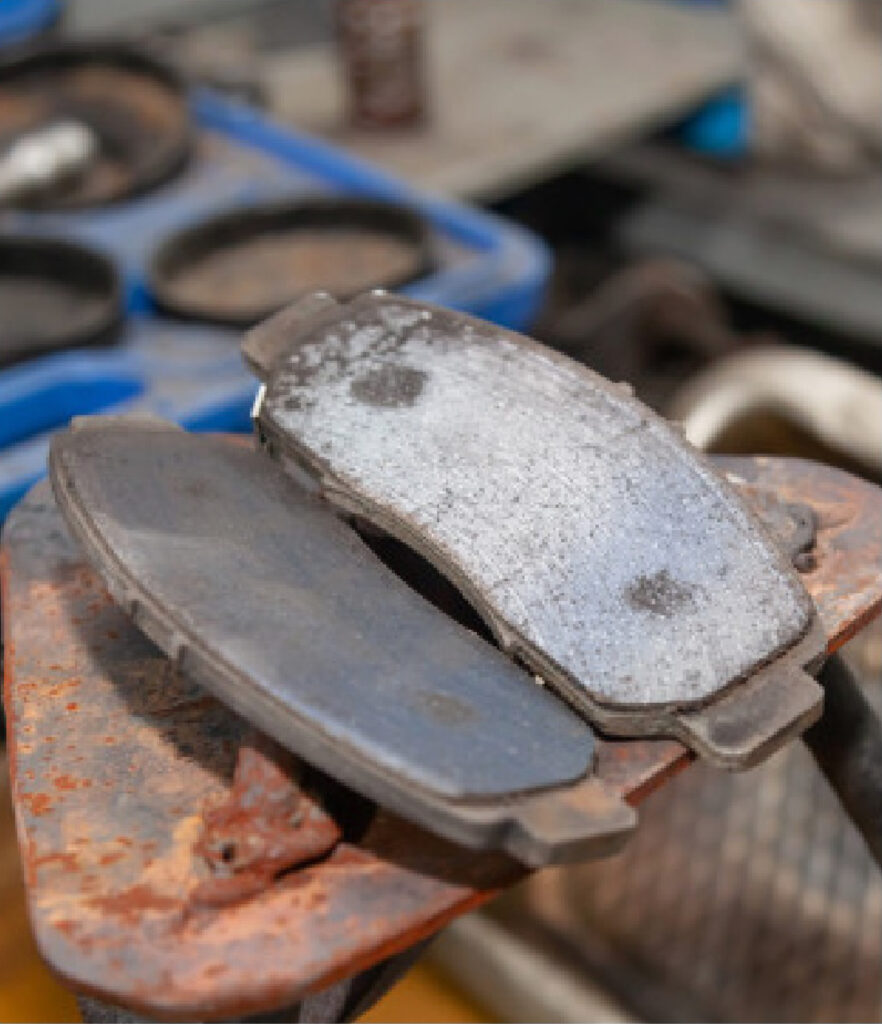
IN A NUTSHELL: ROTORS
Brake rotors are circular metal disks attached to the wheels of automobiles. The primary function of the rotors is to use friction to slow down the rotation of the car’s wheels.
HOW DO THEY WORK?
The braking rotor mechanism starts when callipers compress the brake pads. The pads provide friction on the rotors, reducing wheel rotation and vehicle speed. Frictional braking produces a lot of heat.
As a result, brake rotors are made of steel to endure the heat. Ribs or gaps are commonly found on brake rotors to enable heat to dissipate efficiently during the braking process. The type of ribs used in the design of brake rotors distinguishes them.

THERE ARE THREE TYPES OF BRAKE ROTORS WE PROVIDE
Brake rotors come in a variety of shapes and sizes. It’s important to understand these styles so you can find and buy the right brake rotors for your vehicle when it’s time to replace them.
1. BLANK AND SMOOTH
The most common rotor type for passenger vehicles, such as most regular sedans, is blank and smooth rotors. Blank rotors are both simple and inexpensive.
Some manufacturer-specific blank rotors, on the other hand, can be made from recycled steel. As a consequence, some blank and smooth rotors work and last less than other rotor forms.
2. DRILLED AND SLOTTED
Drilled and slotted rotors combine the above-mentioned heat dissipation and debris removal designs. Drilled holes and slots are arranged in spiral patterns around the outside of the brake rotor surface.
High-performance vehicles usually use these brake rotors. Sports cars are an excellent example. To achieve their exceptional performance, such vehicles rely on top-tier cooling and heat dissipation.
3. SLOTTED
Slotted rotors have unique slots located along the outer rotor surface. Since these larger and heavier vehicles need the more stopping power, slotted rotors are commonly used in heavy-duty trucks and heavy SUVs. Slotted rotors are often favoured by people who often tow heavy loads in their vehicles.
The slots allow extra air to flow between the rotor surfaces and the brake pads that are used with them. As a result, the rotors benefit from improved cooling and heat dissipation, as well as less debris accumulation over time. However, slotted rotors do not last as long as other styles and can cause brake pads to wear down more quickly.

BRAKE ROTORS REPLACEMENT
It’s a good idea to replace your rotors from time to time. Brake rotor replacement is necessary because any braking will wear down the steel surfaces of the rotors and the brake pads over time. As these components wear out, the braking responsiveness and durability will suffer, posing a danger when driving.
Make a habit of inspecting your brake rotors as part of your annual car maintenance. Alternatively, inspect the brake rotors on a regular basis. You’ll also notice when your rotors begin to degrade inefficiency, as your braking will become less sensitive and immediate.
IN CONCLUSION
Brake rotors are critical components of your vehicle’s overall braking mechanism. Keep an eye on how they work and how sensitive your braking action is so you can replace them as needed. When shopping for new rotors, don’t be afraid to ask a mechanic which rotor style is better for your vehicle and driving habits.





